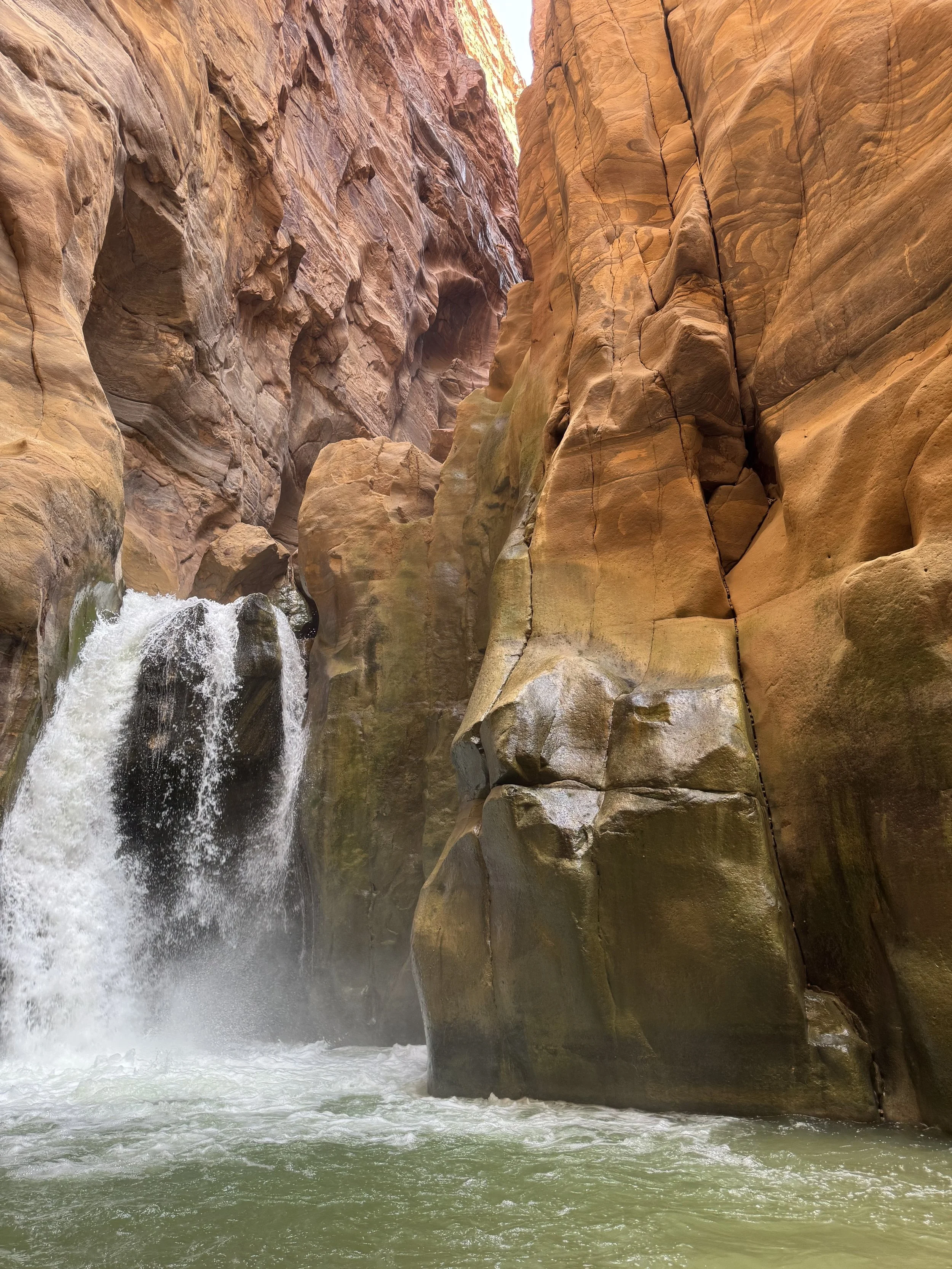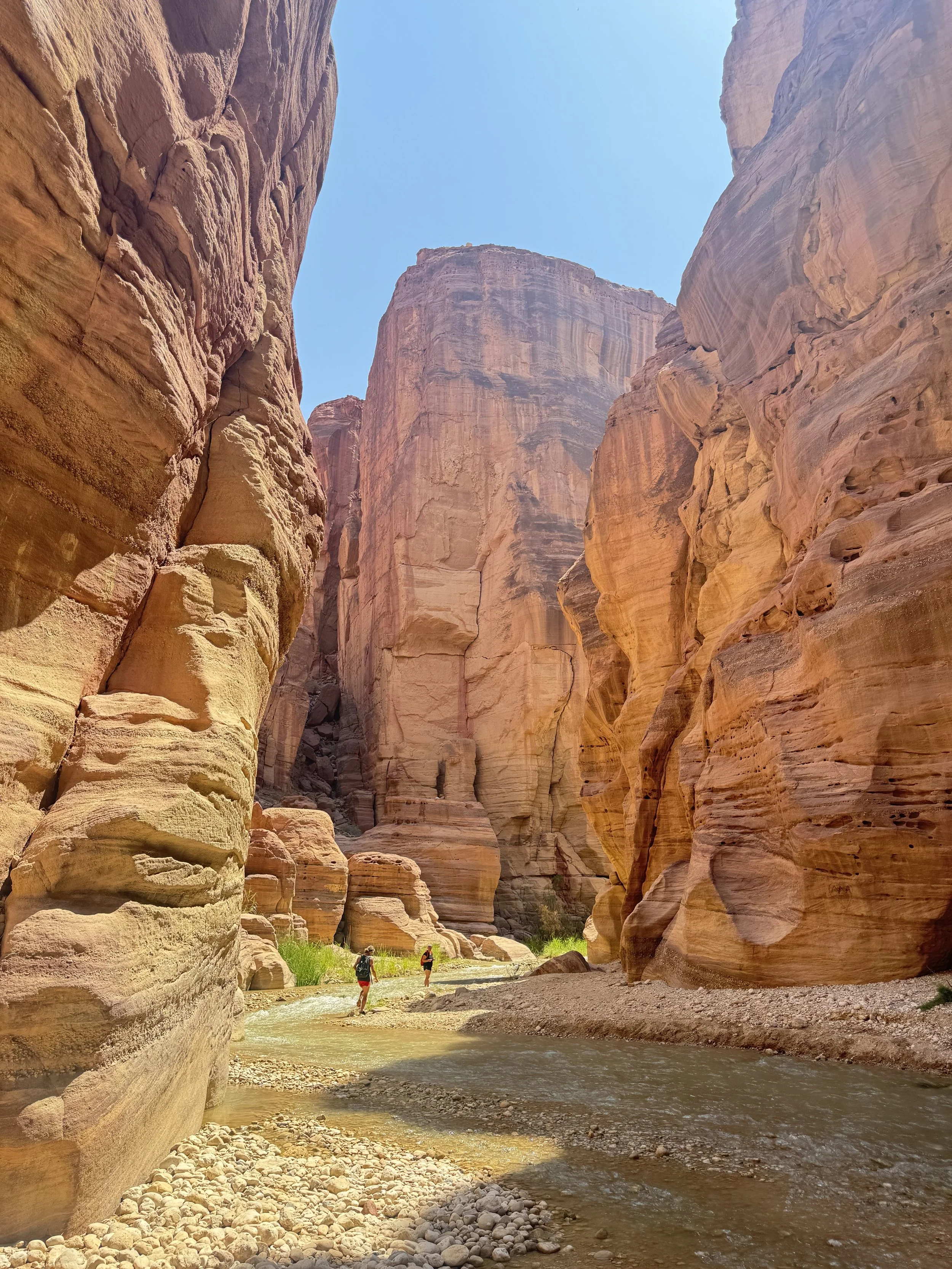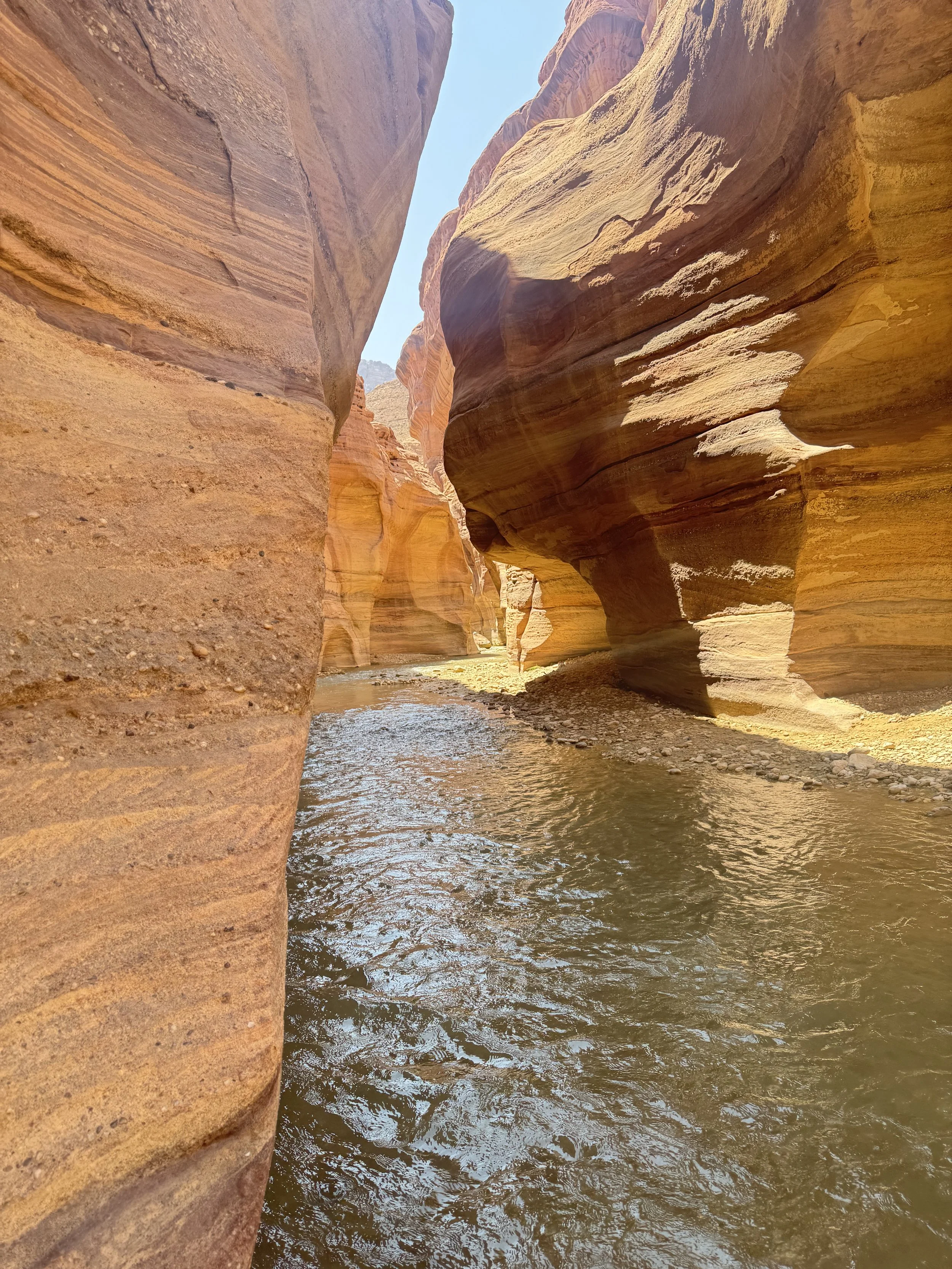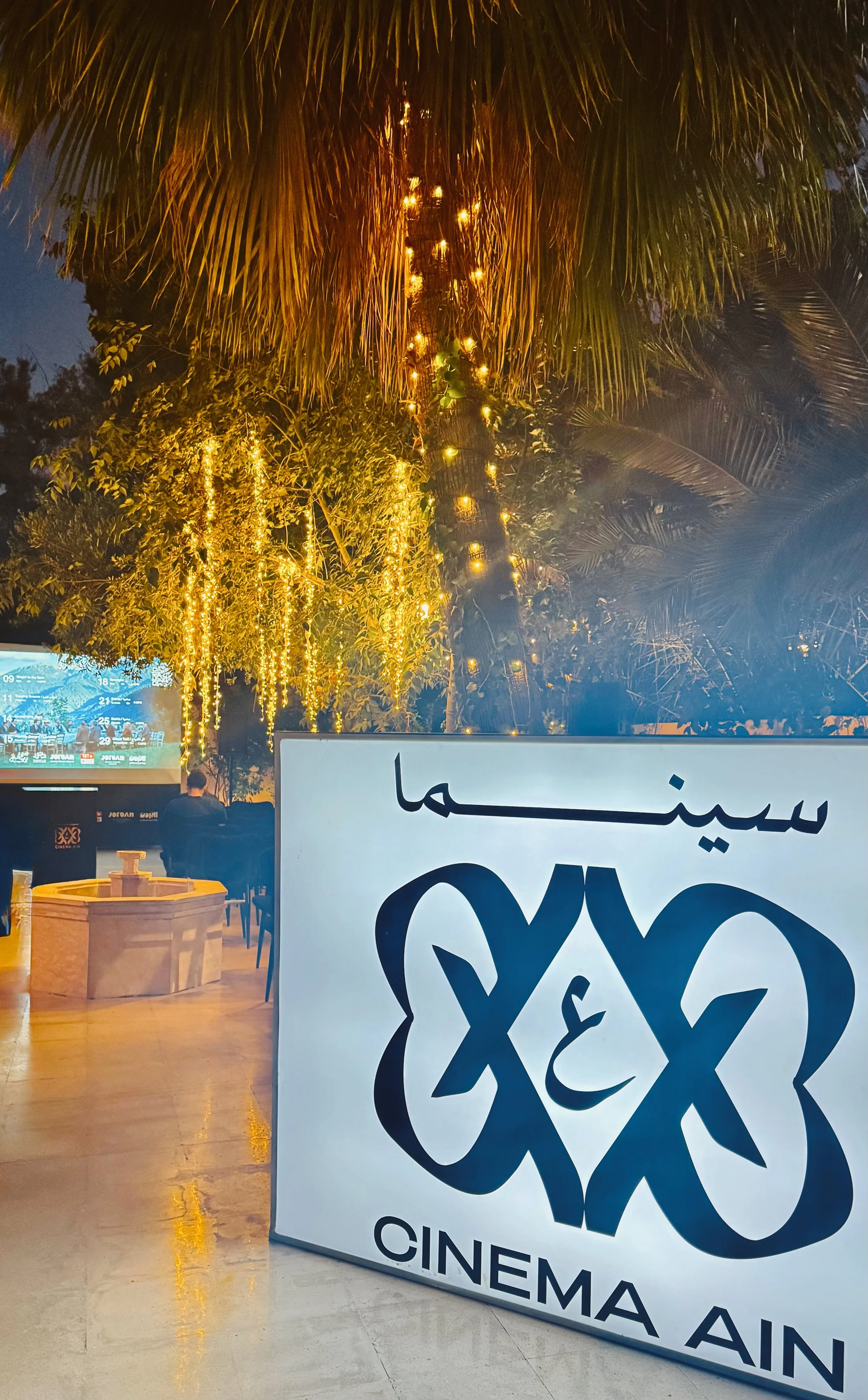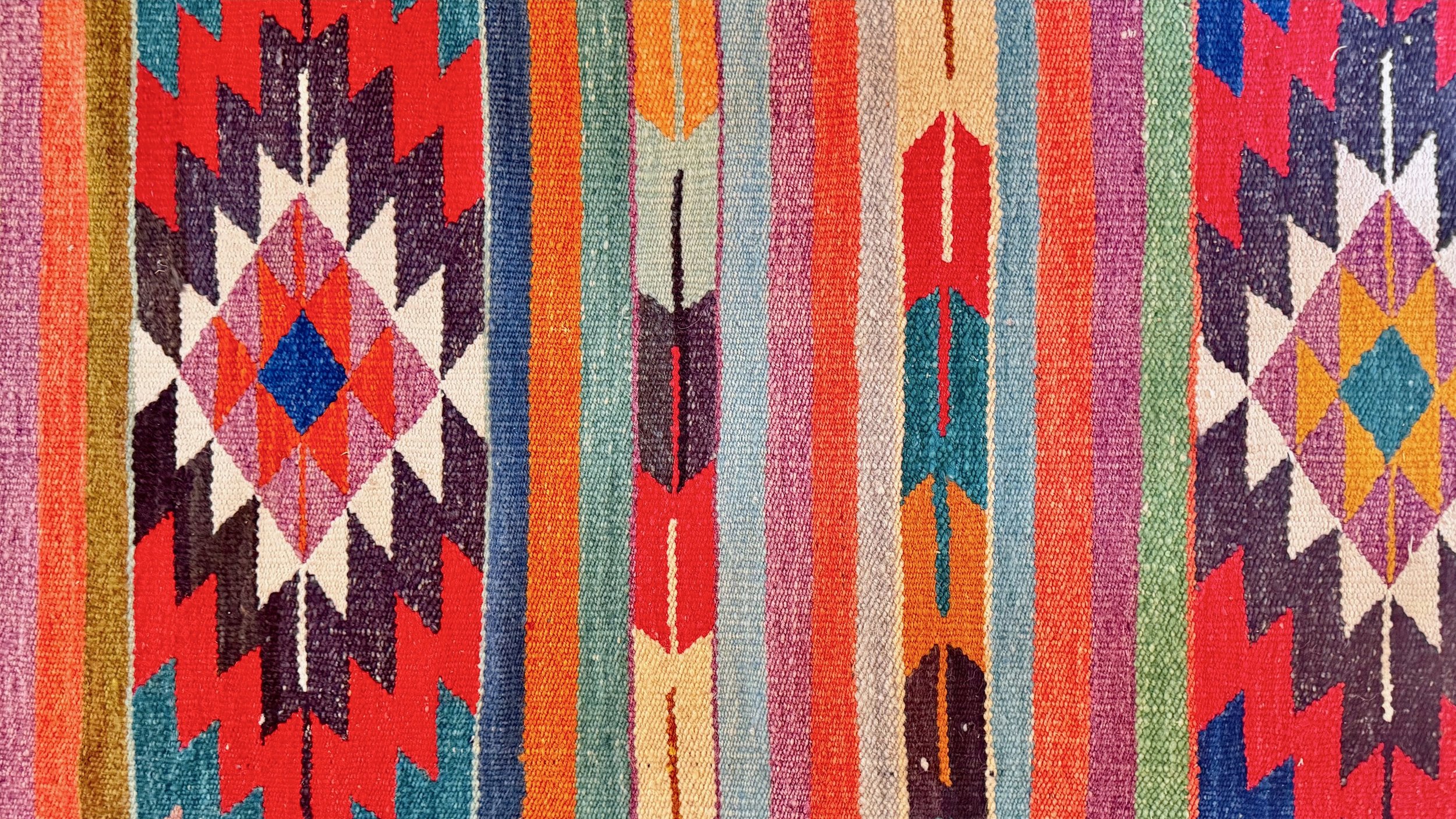June 2025
Welcome to our newsletter, Tidings: missives from Jordan featuring the people, places, and moments we’ve discovered and delighted in over the past month.
In Jordan, June was a month marked by uncertainty above all else. We were caught in the midst - quite literally - of terrifying regional escalations, watching helplessly as western news echoed the same pleas for military intervention and the same empty justifications that have long haunted the region. Despite the trepidation, at Taleeleh, our instinct was to hold tighter to everything we love about this place, to revel in it, to dive deeper. It was an instinct we took quite literally: trekking into the farthest reaches of Jordan’s magnificent wadis.
No, we’re not talking about Wadi Rum, but rather the numerous ancient canyons formed over millennia along the length of the Dead Sea (wadi is Arabic for valley or ravine). These canyons have been cleaved by water drainage through the steep descent from the highlands to the depths of the Jordan Rift Valley, which, at over 400 meters below sea-level, also marks the lowest point on earth. The geography is dramatic, and the result is breathtaking: wadis are one of Jordan’s most unique natural features, and they make for excellent adventuring.
With roughly 80 wadis in Jordan, each with its own unique character, the main challenge is choosing which one to hike. We started with Wadi Mujib, perhaps the best known in Jordan and managed by the Royal Society for the Conservation of Nature (RSCN). This wadi has an entry fee and mandatory lifejackets, which may feel unnecessary for the first kilometer or so of wading through knee-height water, but just wait. Further into the wadi, the river deepens and its strength accelerates against the narrow sandstone walls, which soar up to 1000 meters overhead, blocking out the beating sun and revealing only a thin strip of sky.
At certain points, the wadi transforms into a natural waterpark, as the river cascades in foamy sprays over fallen rocks and other obstacles that can only be traversed with the help of knotted rope, ladders, or iron footholds. The hike culminates in a 20-foot waterfall tumbling into a churning misty swimming hole. On the way out, you can float on your back (my kind of hiking!) and let the river gently carry you as you gaze up at the birds chittering and swooping between the canyon walls above.
Next, we hiked Wadi Al Hasa, which has been on my list for nearly as long as I’ve been in Jordan. Located over two hours from Amman, it is one of Jordan’s southernmost wadis - probably why I hadn’t gotten around to it before. We made a road trip out of it, driving down to Dana Village where we watched the sunset and spent the night in order to get on the road (and into the wadi) early the next morning.
Wadi Al Hasa is a significant geological feature in central Jordan, an enormous drainage basin for the surrounding plateau. It is the country’s longest wadi, and dedicated hikers can spend up to two days trekking it from end to end. The vivid robin’s egg blue of its waters against the tawny stone makes for the kind of jaw-dropping scene that demands a new photo around every bend. Don’t be surprised if you end your hike like I did, with a camera roll full of slight variations of (essentially) the same image, all equally beautiful.
The physical magnificence of these formations is transcendent, yet their stony paths and coursing water demand presence of mind and body.
Wading through the nooks and crannies of Jordan’s ancient landscapes - feeling yourself literally within the earth, dwarfed by rock walls stretching back hundreds of millions of years - is an experience that is as grounding as it is spiritual. The physical magnificence of these formations is transcendent, yet their stony paths and coursing waters demand presence of mind and body. There is something special, even therapeutic, about that combination, especially in times of uncertainty.
more June highlights:
A night at the movies with Cinema Ain!
“a nomadic outdoor cinema on a mission to move minds - and screens - across Jordan.”
Cinema Ain is building a movement for independent storytelling, cultural exchange and local connection.
Offering a diverse selection of independent films with ties to the region, Cinema Ain celebrates the magic of the movies in a fresh and accessible way.
We went to a showing of the Somali film Samia held at NOFA Creative Space, in one of Amman’s beautiful traditional gardens.
Bani Hamida Women’s Weaving Collective
On our way back from Wadi Al Hasa, we spent a lovely afternoon with Sit Halima, a master artisan weaver from the Bani Hamida tribe and a leading authority on the traditional art of Bedouin weaving. Halima was one of the founding women involved in the project to revive this heritage craft, and she welcomed us for a delicious lunch and weaving demonstration at her guesthouse in Mkawer.
More on this later! We hope to go back in July for a weaving workshop.

